Purchasing a laundromat in 2024? Yes, it’s a smart move as a budding investor.
Imagine profiting from a venture that virtually runs itself. And, not just any profit, but becoming a part of a $5 billion industry. This industry, by the way, keeps growing at a steady pace of 1.7% annually.
Buy a Laundromat, they said. And, they were absolutely right!
In the next few minutes, you’re going to learn about the nuts and bolts of buying a laundromat. A detailed analysis of costs, cherry-picking the best locations, and realistic profit margins. We cover every aspect, from the upfront costs to the day-to-day management, of running a franchise in the laundromat sector.
So, ready to turn those quarters into stacks of cash? Let’s do this.

Metrobi has been a game changer for laundry industry.
With Metrobi, you can save 23% on delivery costs, save 80% of the time from managing deliveries, and delight your customers with delivery notifications & tracking.
How to Buy a Laundromat: A Step-by-Step Guide
Market data, cost dynamics, location considerations, profit margins, and financing options – key pillars waiting to build your successful Laundromat.
Step 1: Conducting Market Research
The first step of any business venture is getting under the hood of its market. Market research gives you an edge by providing valuable insights you would not possess otherwise. Understanding customer preferences, existing competition, and potential growth are the lifelines of your Laundromat business. Considering launching a Laundromat but daunted by what it entails? This blog simplifies it all, explaining everything from conducting market research to selecting the right equipment.
Exploring the Laundromat Market: A Steady Growth Industry 💼📈
The laundromat industry in the US has witnessed consistent growth, with an estimated revenue of $6.6 billion in 2023, growing at a CAGR of 0.5% over the past five years.
Step 2: Understanding Laundromat Startup Costs
Purchasing or starting a laundromat isn’t a walk in the park. It’s a financial commitment. Knowing the costs upfront helps you plan, budget, and make informed decisions. From purchasing the equipment and store setup to operating and maintenance costs, dive into the cost layers to avoid hidden surprises. Considering launching your own laundromat but feel daunted by the details? This article will guide you through the essentials of beginning a laundry service, from cost estimation to operational strategies.
Equipment Costs
Cogs in your laundromat business wheel, robust and efficient machines are critical. From washers, and dryers repair machines,to change machines and laundry carts, the setup costs, and their quality matter. Plan for investing in durable equipment with low maintenance costs.
Initial Investments in Laundromat Equipment: A Cost Analysis 💸🧼
Setting up a laundromat requires substantial initial investment, with commercial washers and dryers costing between $800 to $2,600 each. The total for new machines can range from $32,000 to $260,000, not including additional costs for card reader systems, laundry carts, and seating areas which can add another $40,000 to $80,000.
Step 3: Choosing the Right Laundromat Location
Location, location, a good location – That’s your revenue mantra. Picking a property in an easily accessible, high-traffic area with ample parking can accommodate customer volume and needs but also be pricey. Here’s where your brilliant market research plays an essential role.
Leasing vs. Owning
Should you lease the store area or outright buy it? Each lease or purchase option carries its pros, cons, and costs. Leasing may offer financial flexibility, but ownership could be a long-term profit booster.
Step 4: Evaluating Laundromat Profit Margins
Profit margins are the pulse that keeps your business beating. Charging the right price for your services influences your profit margins significantly. Calculate the current market pricing, your costs, and then determine the suitable pricing structure.
Profitable Ventures: The Financials Behind Laundromats 💰🔄
The profit margins for laundromats range between 20% to 35%, with coin laundry industries enjoying around 25% profit margins.
Step 5: Securing Financing for Your Laundromat
To scoop up profits, you first must pour in the dough. Funding options vary from personal savings, bank loans, investors’ money, or even crowdfunding. Choose wisely considering the interest, repayment terms, and your financial capabilities.
A comprehensive step-by-step roadmap to owning your laundromat is laid out. Each step presents critical decisions that influence your venture’s health and growth. An attitude of learning and adaptation can turn the tide of your laundromat business in your favor. Rotation doesn’t only belong to your laundry machines!

Save 80% of the time from managing deliveries and drivers.
Metrobi provides a dedicated operations manager that coordinates drivers on your behalf and solves urgent issues.
Crafting a Comprehensive Laundromat Business Plan
The inception of any successful business lies in forming an effective business plan. Having a robust business plan implies having an in-depth understanding of the entrepreneurial landscape—a prerequisite to shaping your Laundromat service into reality. A good structure for the business plan provides a roadmap to align your strategies and operational efficiency.
When the financial blueprint is laid out smartly, it guides you in your financial situation and making well-informed investment and operational decisions. Additionally, it aids external stakeholders—investors, partners, and financial institutions—in comprehending your venture’s viability and profitability. Being thorough and comprehensive in your business plan also boosts your credibility in the eyes of stakeholders.
In a nutshell, a robust business plan preempts and addresses potential pain points, guiding your operation in creating a sustainable and profitable Laundromat.
Key Components of a Laundromat Business Plan
Market Analysis
Demystifying the market, your prospective clientele, and scrutinizing your competition forms the backbone of market analysis. A profound understanding of your customers—identifying key demographics and customer preferences—can provide insights influencing your business model.
Who Uses Laundromats? Demographics and Customer Insights 🧺👥
Laundromats primarily serve low-income renters and individuals in multi-family housing, with 60% of patrons being women and 87% living within a mile of the facility. The median household income of customers is around $28,000, with a high repeat customer rate of 90%.
Business Model
Building a user-centric business model accelerates a Laundromat’s growth. Tailoring your laundry services, to cater to market demands, determining pricing, and offering unique selling propositions are elemental to the model. A well-strategized model also includes drafting efficient operating procedures to minimize costs and maximize profitability.
Finance Management
Prioritizing sound financial planning is vital to your business’s endurance. Besides setting a budget for each operation, also consider revenue projections, fixed and variable costs, and the break-even point. Ensure planning for potentially unforeseen expenses and taking these costs into account can save you from financial setbacks in the future.
Succinctly, a meticulous business plan, focused on market analysis and a user-centric business model combined with sound financial planning propels your Laundromat towards success. Remember, doing your homework right at this stage paves the way for easier navigation through the rest of your business journey.
Navigating the Legalities of Owning a Laundromat
Understanding Zoning Laws
While your meticulous laundromat business plan begins to take shape, an overlooked but crucial step is understanding zoning laws. Zoning laws affect where you can open and operate your brand new laundromat.
As potential laundromat owners, it’s important to study the local zoning regulations. Some areas may have restrictions against laundromats or requirements for parking spots, and bypassing these constraints may lead to fines and legal hassles. An essential tip to remember is that zoning laws can vary considerably among different cities and states.
Acquiring Necessary Permits and Licenses
Once you’ve figured out the zoning laws and chosen a suitable location, the next step is obtaining proper permits and licenses. The specific licenses needed may vary based on your location but they generally include a business license, resale license, and the necessary building permits. For those aspiring to own a laundromat, navigating the specific permits required can be daunting; thankfully, our latest blog post dives into the must-have permits for launching a laundromat, simplifying the process for you.
In most regions, you cannot operate a laundromat without a business license. It’s this license that allows you to collect taxes. Consulting with a legal expert can significantly expedite the process and help you understand which licenses and permits you require to operate your laundromat legally.
Complying with Health and Safety Regulations
While the health and safety requirements may not be as stringent for laundromats as they are for businesses like restaurants, you still have certain responsibilities to ensure the safety of your customers.
Every Laundromat should provide clean facilities and functional, safe equipment. Some areas may also require regular inspections of fire alarms and safety equipment. It’s important to consult with local authorities or a legal representative to understand the necessary safety regulations that apply to your Laundromat.
List of Safety Regulations for Laundromats
Manual Tasks:
Activities requiring force exerted by a person like lifting, carrying, pushing, or pulling can cause injuries.
Common tasks causing injuries in laundries include pushing heavy trolleys, lifting laundry bags, loading washers and dryers, and folding laundry
Recordkeeping:
Maintain an injury and illness log if you have 10 or more employees.
Record work-related injuries or illnesses on OSHA forms annually
Equipment Safety:
Ensure all equipment used in the laundry is suitable for its purpose and conditions.
Regularly maintain equipment to ensure it is safe for use
Hazardous Substances:
Minimize contact with hazardous substances by using less harmful products where available.
Properly store hazardous substances to reduce the risk of exposure
Fire Risks:
Laundry fires can occur due to electrical faults, lint build-up in machines, or spontaneous combustion of laundry.
Ensure wash temperatures and detergents are suitable for removing oils that can cause fires
Ladder Safety:
Conduct monthly inspections of ladder integrity to ensure safety.
Check for any damage like bent or missing rungs and ensure all safety stickers are legible
Electrical Safety:
Inspect outlets, wires, and electrical boxes regularly to prevent electrical shocks.
Ensure proper grounding, cover plugs, and have GFCI protection near water sources
Lockout/Tag Out/Control of Hazardous Energy:
Isolate power sources when working on machines to prevent accidents.
Lock breaker boxes while switches are off during maintenance work
Walking/Working Surfaces:
Maintain safe walking surfaces to prevent slips, trips, and falls.
Address any hazards that could cause accidents on surfaces within the laundry facility
As an owner, maintaining health and safety standards is not only a legal obligation but can potentially help to attract and retain customers, thus positively impacting your bottom line. Conduct periodic employee safety audits and implement a regular cleaning schedule to ensure the continuous upholding of health and safety standards.
Despite these daunting legalities, owning a laundromat in 2024 can be a profitable venture. A well-planned business model and effective compliance with legal and safety guidelines can set your laundry business you up for financial success too. At the same time, understanding the legal requirements of operating laundromats can help you avoid potential fines and legal problems down the line.
What is a Laundromat and Why Invest in One?
In a nutshell, it might sound a tad bit far-fetched to think of owning a house – a laundromat house – but stick around, we promise it’s worth considering for building a new income stream.
Laundromat Businesses: A Path to High Returns and Success Rates 🚀💹
With a success rate of about 95%, laundromat businesses offer an appealing average ROI of 20-35%. The US is home to approximately 35,000 laundromats, generating around $5 billion annually.
A laundromat is a business with self-service laundry facilities usually coin-operated, where patrons wash and dry their clothes themselves. The term heralds from the U.S, with slight variations across the globe – launderette in the UK and washeteria in some parts of the southern U.S. Owing to the prominence of coin-operated models, it’s often also referred to as coin laundry or a used coin laundry business.
It is essential to note that this model has continually evolved over time – straying away from just basic self-service laundry. Strategically positioned laundromats today offer many residents value-added services like drop-off service, dry cleaning, ironing, and even locker rentals, further boosting the revenue potential.
Benefits of Owning a Laundromat
For the passive income aficionados, here lies a gem. Laundromats coin laundry businesses are such a good investment that can earn their owners a steady income without necessitating their constant hands-on attention. Once set up and fully operational, laundromats can essentially run on autopilot, leveraging the self-service model they’re built upon. The established businesses also boast substantial cash flow – everyone needs clean clothes, so the demand is consistent.
The cherry on top – laundromats can potentially weather economic downturns, clothing cleanliness being a non-discretionary need. We firmly believe that a majority of challenges can directly be converted into opportunities. They can serve as a revenue diversification tool for those already in similar industries like dry cleaners or even as a solid entry point into owning your own laundry business.
Perks of Owning Your First Laundromat
Owning a laundromat can indeed offer a range of benefits that make it an attractive business opportunity for those seeking passive income and steady cash flow. :
Steady Income: Laundromats provide a consistent flow of customers as clean clothes are a necessity regardless of economic conditions, ensuring a steady income stream
Low Labor Costs: Operating a laundromat involves minimal labor costs as customers largely handle the laundry process themselves, making it a cost-effective business to run
Flexibility: Laundromats offer operational flexibility, allowing owners to choose whether to staff the store during specific hours or even run it remotely, enhancing convenience and adaptability
Scalability: The business model of a laundromat is easily scalable, enabling entrepreneurs to expand their operations and potentially grow into a multi-store business with smart management and efficient equipment
Recession-Proof: Laundromats can be resilient during economic downturns since the need for clean clothes is a non-discretionary requirement, making them a reliable source of income even in challenging times
Potential Challenges and How to Overcome Them
Let’s be real here – although lucrative, owning a laundromat does come with its fair share of challenges. Upfront setup costs can be high – location rent, machinery procurement, licenses, etc. Regular maintenance costs can also pile up, literally, with each cycle. Often overlooked, there’s also the challenge of finding and retaining reliable staff.
However, the antidote to these challenges lies in effective strategic planning, patience, and resilience. A robust business plan, comprehensive market analysis, budget allocation, and contingency planning can alleviate some of these potential setbacks. By leveraging technology like mobile payments or apps to book time slots, you can also reduce operational costs and elevate the customer experience simultaneously.
Challenges of Owning a Laundromat:
- High Setup Costs
Setting up a laundromat involves significant upfront expenses like location rent, machinery procurement, and licenses - Regular Maintenance Costs
Maintenance costs can accumulate over time, impacting profitability - Staffing Challenges
Finding and retaining reliable staff can be a persistent challenge in the laundromat business
Strategies for Mitigating Challenges:
- Effective Strategic Planning: Developing a robust business plan with comprehensive market analysis can help in anticipating challenges and planning accordingly
- Budget Allocation: Careful budgeting and financial planning can ensure that resources are allocated efficiently to cover setup costs and ongoing maintenance expenses
- Contingency Planning: Having contingency plans in place for unexpected events or financial downturns can safeguard the business against unforeseen challenges
- Leveraging Technology: Implementing technology solutions like mobile payments or booking apps can streamline operations, reduce costs, and enhance the customer experience
Essential Equipment for a Laundromat
Types of Commercial Laundry Equipment
Surviving in the Laundromat industry is no laundry day stroll. You need high-quality appliances capable of handling vast quantities of clothing, bedding, and other textiles. But what does this involve?
Average Costs for Starting a Laundromat: Equipment and Setup 🏷️🧼
The total investment for setting up a laundromat can range from $90,000 to $400,000, covering costs for commercial washers, dryers, and other essential equipment.
Commercial Washers
Here’s one thing to keep in mind: commercial washers aren’t your ordinary, household washing machines. They’re designed to handle larger loads and are built for endurance. Hence, settling for anything less might drain your profits.
There’s a diverse range to choose from, with top-loading and front-loading options, as well as machines designed to conserve water and energy.
Commercial Dryers
Unlike their domestic counterparts, commercial dryers offer faster drying times and more substantial capacity. Opting for energy-efficient models might cost you a little extra upfront but will save you in running costs down the line.
Coin-Operated Machines
Coin-operated machines are ubiquitous in Laundromats, and for good reason. They allow your customers to pay directly at the machine, saving time and maintaining a hassle-free operation.
Maintenance and Replacement Costs
Upfront equipment costs are just the tip of the iceberg. Running a Laundromat involves maintenance and, occasionally, complete replacement of your machines. These on-going costs can eat into your profit margins if not adequately planned for.
Routine Maintenance
Routine maintenance is an essential practice for all Laundromats. It prevents equipment failure, saving you pricey repair or replacement costs. Regular professional servicing can also lengthen your machine’s lifespan, maximizing your return on investment.
Replacement Costs
The average lifespan of commercial coin laundry businesses equipment can range anywhere from 10 to 20 years. When the time comes, replacing these older machines is a significant financial undertaking. Hence, understanding these costs and factoring them into your business plan is vital. Depending on the type and quality of machine, a new commercial washer or dryer can range from $500 to several thousand dollars.
The Long-term Payoff
Yes, the initial investment and ongoing costs can be steep. But by strategically selecting reliable, energy-efficient machines and a solid maintenance schedule, your Laundromat will continue churning out profits for years to come.
Marketing Your Laundromat for Success
Importance of Branding and Local Marketing
To attract and retain customers to your laundromat in 2024, an appealing and recognizable brand is crucial. It’s more than just a memorable logo or a catchy slogan; branding reflects the quality of your service, your business ethos, and what sets you apart from competitors.
Local marketing, geared towards reaching people in your immediate area, is equally as important in enhancing visibility. Strategies could include advertising in local newspapers or sponsoring community events for boosting your coin laundry business.
Local Marketing: A Key Strategy for Small Business Growth 📊🌐
Local marketing proves vital for small businesses, with 47% of owners handling their marketing efforts. The significant impact of online presence is highlighted by the fact that 81% of shoppers research online before making a purchase, and 75% of local-intent mobile searches lead to in-store visits within 24 hours.
Leveraging Social Media and Online Reviews
Harnessing the potential of social media amplifies your visibility, allows real-time engagement with customers, and could ultimately drive more business to your laundromat. Encourage satisfied customers to leave positive reviews on platforms like Yelp or Google to boost your online reputation.
Offering Promotions and Loyalty Programs
Nonetheless, nothing encourages repeat business like promotions and loyalty programs. Regular discounts and rewards for repeat customers drive both new and existing customers to keep coming back.
A well-thought-out and executed marketing strategy takes your laundromat business from being just a place to wash clothes to a recognized brand within your community. It sets your laundromat up not only for profitability but for longevity, creating a business that will be a staple in your community for years to come.
Your Laundry Empire Awaits
Entering the laundromat industry isn’t a spin in the dark. Weighing the costs, analyzing the locations, and understanding profit margins are like the triple-hose system in a commercial washer—integral core elements for a spotless investment.
Why is this worth your dime? Because every stain on a shirt represents an unwashed opportunity.
Let’s dive in. Start by assessing the demand in your local markets, factor in setup and ongoing costs and crunch those potential profits. Are you an owner intending to run your laundromat as a side gig or a full-time enterprise? Now’s the time to decide.
So, now bearing in mind the importance of location, costs, and potential profits, which community could benefit from your laundromat services?
Remember, a successful laundromat is about more than selling just clean clothes. It’s about empowering a community with the means to keep their garments and lives spot-free. Your move!



























